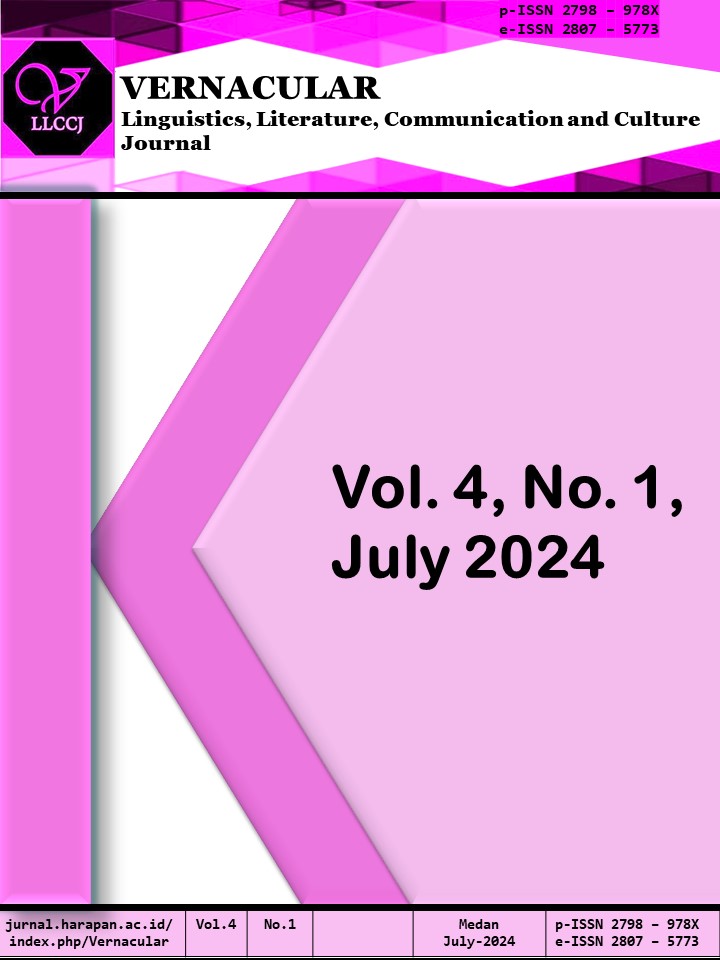Metafictional Elements in Inside Out (2015) Film: a Psychoanalytic Analysis
DOI:
https://doi.org/10.35447/vernacular.v4i1.931Keywords:
Metafiction, Psychoanalytic Criticism, FilmAbstract
This research is aimed to analyze the metafictional elements found in Inside Out (2015) film. The researcher analyzed the metafictional elements contained in Joy’s V.O lines in Inside Out (2015) film based on Waugh’s (1984) analysis of metafiction and the psychoanalysis of Joy’s emotional development in Inside Out (2015) film. The psychoanalysis of Joy is done by applying Freud’s (1923) theory of The Structure of Personality; the id, ego, and superego. The sources were taken from various e-books, journals, scientific articles, and other library resources to support this research. The result of this research concluded as follows; 1) the twenty-one data found in the film collectively contained metafiction; and 2) the id, ego, and superego are successfully applied to the analysis of Joy’s emotional development.
Downloads
References
Alifian, M. A. (2023). Metafictional Mode in Novel Hari-Hari Yang Mencurigakan By Dea Anugrah, 188–198.
Calvin S. Hall, & Lindzey, G. (1957). Theories of Personality (Vol. 2nd Edition). John Willey & Sons, Inc. Retrieved 26 May 2024 from https://babel.hathitrust.org/cgi/pt?id=uc1.$b397395&seq=8
George, M. W. (2008). The Elements of Library Research. New Jersey: Princeton University Press.
Matlock, J. (2016). Metafiction As Anti-Genre Across Narrative Mediums.
Nawawi, H. (2001). Metode Penelitian Bidang Sosial (9th ed.). Yogyakarta: Gadjah Mada University Press.
Vijaya, V., & Oushep N, S. (2023). Metanarrative in Philippa Pearce’s Tom’s Midnight Garden: A Psychoanalytic Reading. Forum for World Literature Studies, 15(2), 222–241. Retrieved from https://www.researchgate.net/publication/372442513
Waugh, P. (1984). Metafiction: The Theory and Practice of Self-Conscious Fiction. Taylor & Francis E-Library.








.png)

















